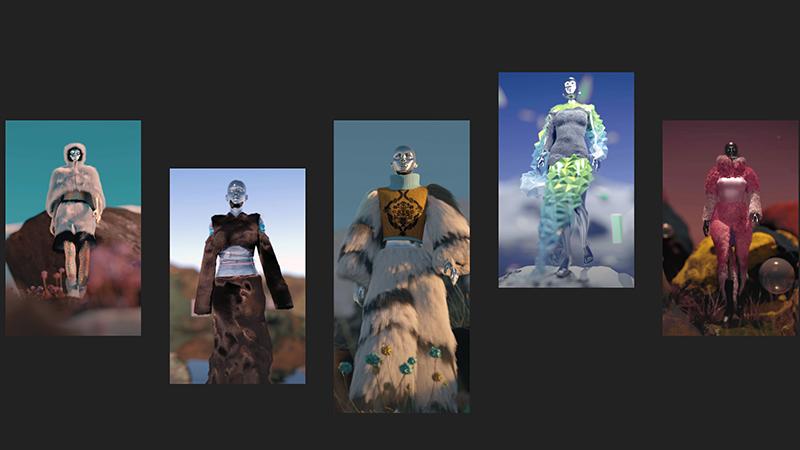Westminster Fashion students have designed UNFUR, a digital fashion collection in an exciting collaboration with digital asset company, Mobiquity. The project was recognised by Awwwards and supported by the International Anti-fur coalition (IAFC) which fights the fur industry worldwide.

The students created experimental digital outfits from ‘fur’ – but no animals were harmed, as the pieces only exist in the Metaverse. The five pieces were designed by four second-year undergraduate students from Westminster’s Fashion Design BA course, Blythe Burnt, Denise Maissonave, Jessica Rey and Isabel Ealand, and were digitalised by Hexaware. The project was led by Paul Van Raak, Creative and Brand Design Director, and his colleague Elena Pavaletz from Mobiquity.
According to IAFC, at least a billion rabbits and over 95 million other animals are killed each year for fur trade, making it one of the cruellest industries on the planet. To fight the brutality of the real world, the collection was created as Non-fungible tokens (NFT’s) which can be can be bought through auction on the Rarible online marketplace. The pieces are sold in FLOW cryptocurrency as this blockchain only requires 0.18 gigawatt hours (GWh) of energy, which is very low compared to other blockchains. The money raised from the sales will be given to IAFC to support their work.
“The UNFUR project intentionally brings tension between buying a digital fashion piece (because it is considered beautiful) while you are aware that it should not be bought in the physical world,” Paul Van Raak commented during the preparations.
Lionell Schuring, VP and Chief Creative Officer of Mobiquity, believes that digital fashion is built for the virtual-reality space (Metaverse), as it is one of the first industries that can actually make effective use of it. Fashion plays a similar role in the physical and digital world, for example in video games, where the players can express themselves through the appearance and clothing of their avatars. While there is controversy about the amount of energy NFTs and blockchains use, the fashion industry, with its low prices and mass production of clothing, is responsible for more than 92 million tons of waste annually.
The Metaverse does not restrict creativity with physical boundaries, so when it comes to the fur industry, there are many new possibilities for becoming sustainable and cruelty free. As Schuring describes it: “To substitute real fur and its implications to the animals and the environment, but still use the garment from a fashion point of view, we are launching UNFUR digital fashion collection using NFTs. This initiative creates a debate between wearing fur in the digital world while no animals are being hurt and auctioning the NFTs and using the money we get to fight the fur industry in the physical world.”
The collection was launched in June at MET AMS, Europe’s leading metaverse festival that takes place in Amsterdam. The project was introduced on the first night of the festival on the Legendary Dinner, where the guests had exclusive possibility to bid on the pieces. Paul Van Raak joined the panel discussion titled ‘Blockchain for good, charity & transparency in the metaverse’, where he talked about the possibilities and initiatives of the metaverse and Web 3.0. All five NFTs were displayed on an installation during the whole event for the potential buyers to see.
Isabel Ealand, one of the student designers of the collection, said: “I loved the design process as I was so inspired by the cause. I am so happy with the success of the campaign and the awareness it has raised!”
The project has received ‘Site of the Day’ and ‘Developer Award’ from Awwards. The company recognises the best web designers, developers and agencies in the world. The jury is formed of distinguished designers, creative directors, bloggers and agencies in the industry.
Learn more about Fashion courses at the University of Westminster.


